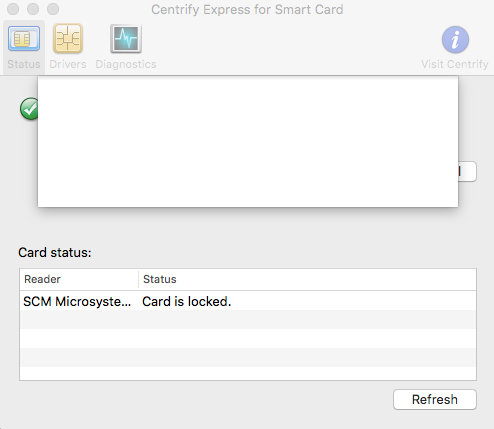.com | .us | .ml | .mobi | .net | .org The Definitive Source for Everything CAC Common Access Card help for your PersonalComputer |
DCPS CAC-enabled Guide - 4 - Enter through the Warning Banners until prompted to add your CAC pin number. Add your CAC pin number and verify. A sub-sequent screen will prompt you to add your name, location and phone number to complete the set up process. To change your settings so you don’t have to complete the. Managing Your Common Access Card (CAC) Once you have your CAC, you'll need to handle it with care because you'll be using it often. The information on this page should help you with the most common scenarios. Your CAC will offer a variety of functions depending on your component/Command. While each component/Command can tailor the functions of. A CAC-enabled mobile access device could provide secure remote connections from any computer to resources inside the Navy network for Reserve personnel not on active duty.
WELCOME TO THE MILITARYCAC HOME PAGE
Army personnel can purchase Office 365 Home for $69.99 per year, or Office 365 Personal for $48.99 per year through the Microsoft Enterprise License Agreement / Home Use Program.

iPhone and iPad userscanuse their CAC and access CAC enabled websitesusing apps and CAC readers
Android users canuse their CAC to access CAC enabled websites using Thursby's app and reader
IMPORTANT NOTICE: If you experience trouble logging in, and you cannot submit a ticket through the milSuite login help page, please let us know in the milSuite Support Channel on Army365. (If you are unable to access A365, you can send us an email at milsuite@mail.mil.)
Cac Enabler For Mac Download
Disclaimer

YOU ARE ACCESSING A U.S. GOVERNMENT (USG) INFORMATION SYSTEM (IS) THAT IS PROVIDED FOR USG-AUTHORIZED USE ONLY.
By using this IS (which includes any device attached to this IS), you consent to the following conditions:
Cac Enabler Program
- The USG routinely intercepts and monitors communications on this IS for purposes including, but not limited to, penetration testing, COMSEC monitoring, network operations and defense, personnel misconduct (PM), law enforcement (LE), and counterintelligence (CI) investigations.
- At any time, the USG may inspect and seize data stored on this IS.
- Communications using, or data stored on, this IS are not private, are subject to routine monitoring, interception, and search, and may be disclosed or used for any USG-authorized purpose.
- This IS includes security measures (e.g., authentication and access controls) to protect USG interests - not for your personal benefit or privacy.
- Notwithstanding the above, using this IS does not constitute consent to PM, LE or CI investigative searching or monitoring of the content of privileged communications, or work product, related to personal representation or services by attorneys, psychotherapists, or clergy, and their assistants. Such communications and work product are private and confidential. See User Agreement for details.

Privacy Act Statement
Cac Enabler Program

Third-party Cac Enabler Program
- AUTHORITY: 10 U.S.C. 3013, Secretary of the Army; Department of Defense Instruction 8500.01, Cybersecurity; Army Regulation 25-1, Army Information Technology; Army Regulation 25-2, Army Cybersecurity.
- PURPOSE: The purpose of milSuite is to provide a collection of social business tools for Department of Defense (DoD) personnel (Common Access Card (CAC) enabled approved) that facilitates professional networking, learning, and innovation through knowledge sharing and collaboration. This system connects Military, DoD Civilian, and DoD Contractor personnel from across the DoD enterprise and provides individuals, units, and organizations a platform to quickly and easily build tools and business processes to support execution of the mission. Access is controlled based on individual needs for specific types of information. Statistical data, with all personal identifiers removed, may be used by management for system efficiency, workload calculation, or reporting purposes. milSuite registers users and displays data from Defense Manpower Data Center’s (DMDC) Defense Enrollment Eligibility Reporting System (DEERS), e.g. name, basic employment information (work phone, address, email), and allows users to post profile pictures to help build their professional network across the milSuite platform with other DoD users. milSuite collects Personally Identifiable Information (PII) for authentication, access control to the system, information contained in the system, and general identity management.
- ROUTINE USE: In addition to those disclosures generally permitted under 5 U.S.C. 552a(b) of the Privacy Act of 1974, as amended, the records contained herein may specifically be disclosed outside the DoD as a routine use pursuant to 5 U.S.C. 552a(b)(3) as follows:
- DISCLOSURE: Voluntary. If a user decides to join milSuite, PII data such as name and email are required to implement and operate the milSuite platform. milSuite displays information from Defense Manpower Data Center’s (DMDC) Defense Enrollment Eligibility Reporting System (DEERS). Upon joining a user has the option to upload a profile picture, videos, or other personal information if they desire, but it is not required.
a. To the appropriate Federal, State, local, territorial, tribal, foreign, or international law enforcement authority or other appropriate entity where a record, either alone or in conjunction with other information, indicates a violation or potential violation of law, whether criminal, civil, or regulatory in nature.
b. To contractors, grantees, experts, consultants, students, and others performing or working on a contract, service, grant, cooperative agreement, or other assignment for the Federal Government when necessary to accomplish an agency function related to this system of records.
c. To any component of the Department of Justice for the purpose of representing the DoD, or its components, officers, employees, or members in pending or potential litigation to which the record is pertinent.
d. In an appropriate proceeding before a court, grand jury, or administrative or adjudicative body or official, when the DoD or other Agency representing the DoD determines that the records are relevant and necessary to the proceeding; or in an appropriate proceeding before an administrative or adjudicative body when the adjudicator determines the records to be relevant to the proceeding.
e. To the National Archives and Records Administration for the purpose of records management inspections conducted under the authority of 44 U.S.C. §§ 2904 and 2906.
f. To a Member of Congress or staff acting upon the Member’s behalf when the Member or staff requests the information on behalf of, and at the request of, the individual who is the subject of the record.
g. To appropriate agencies, entities, and persons when (1) the DoD suspects or has confirmed that there has been a breach of the system of records; (2) the DoD has determined that as a result of the suspected or confirmed breach there is a risk of harm to individuals, the DoD (including its information systems, programs, and operations), the Federal Government, or national security; and (3) the disclosure made to such agencies, entities, and persons is reasonably necessary to assist in connection with the DoD’s efforts to respond to the suspected or confirmed breach or to prevent, minimize, or remedy such harm.
h. To another Federal agency or Federal entity, when the DoD determines that information from this system of records is reasonably necessary to assist the recipient agency or entity in (1) responding to a suspected or confirmed breach or (2) preventing, minimizing, or remedying the risk of harm to individuals, the recipient agency or entity (including its information systems, programs and operations), the Federal Government, or national security, resulting from a suspected or confirmed breach.